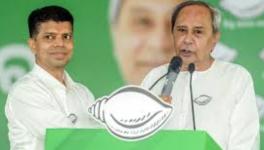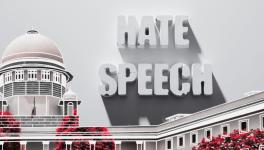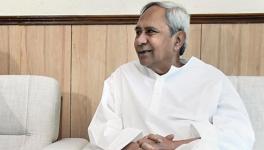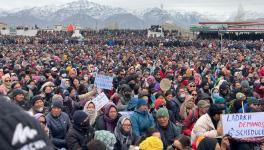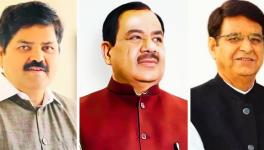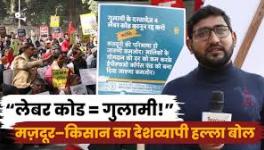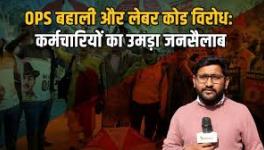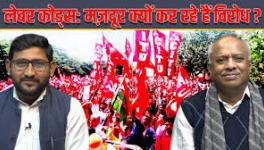Protests Vs Law: What is the Future of India’s Parliamentary Democracy?
Justice is usually visually represented by a lady with covered eyes weighing with a pair of scales. This image flashed before my eyes when a petition was reported to have argued before the Supreme Court that the right to protest had to be balanced against the public right (to use a road). In apparent agreement, the Chief Justice of India mentioned inter alia that previous Supreme Court judgments had also held that the right to protest could not be absolute and universal.
With due respect, I propose to pursue the matter a little further. The right to protest does not appear to be an ordinary right that may be easily set aside by ordinary laws and rules. It is part of the fundamental right of the people to freedom of expression in a democracy. Something equally important has to be invoked to tilt the scales against it.
Freedom of movement is of course important, but it is often locally restricted for various reasons such as repair of roads, building flyovers and bypasses, policing purposes, and sometimes, for something as mundane as VIP movement. In Assam, people are now vexed that the erecting of toll-gates every fifty miles or so on four-lane highways have made them feel roads are no longer meant for free passage for ordinary citizens.
The blocking of the road at Delhi’s Jaffrabad by anti-Citizenship Amendment Act protesters had been a little hasty. However, those responsible had the excuse that the unrelenting but tenaciously peaceful protests at Shaheen Bagh had been stonily ignored by the central government even though the protesters had a demand carrying most vital constitutional import. Besides, many press reports did indicate that there was another road close-by that allowed traffic just as well and provided an alternative route costing a little extra.
The courts are justified in decrying such breaches of law, but not perhaps in belittling the underlying grievance of protesters.
Besides, what are protests meant for?
Protests and Democracy
Some idolaters of 'democracy' seem to think that if the government or any authority inflicts gravely injurious laws on the public, it is okay if the aggrieved party raises a hue and cry, and then go back to business as usual after venting their hurt. This seems a peculiarly odd idea of the right to protest. However, the purpose of protests is not to test one's lungs but demand justice from authorities.
And what if the authorities remain indifferent? Gandhiji had borrowed the idea of 'civil disobedience' from Thoreau. If a high and mighty state trampled upon a citizen's rights, the latter may, as a final resort, take up civil disobedience to defy the state peacefully upon an urge from his conscience. Gandhiji had put it to practice against the stifling legal regime of South Africa of early 20th century and with modest but still substantive results. His historic Salt March had been another milestone in the story of Civil Disobedience. The protesters against CAA had perhaps come to feel that the government was determined to ignore their genuine and just grievance. They had held up copies of the Constitution--something that the report of the Delhi police on the incident ignores. So, Jaffrabad might have been a little experiment in civil disobedience.
Currently, in raging public debates about some important issues, the semantics seem to be under a thick fog. The 'labour law flexibility' seems to allude to the idea of law itself as eminently flexible. The law does not seem to need any universal rational justification but turns out to be whatever the legislature chooses to call the law. After all, we live during the afterglow of the great post-modernist upheaval which turned truth itself into a veritable chimaera.
Recently, there has been some heart-burning in parliament that despite and contrary to the rulebook, the Parliament has been reduced to a rubber stamp, and that justified protests by certain opposition legislators have been suppressed. Their grievance is not so much that they have been barred from the House, but that their voices as people's representatives have been gagged. What does their outcry suggest? The Law Minister, whose body-language has altered from that of a sensitive and humane person during his stint in the Opposition to that of a bad-tempered martinet, has allegedly condemned the disruptions in the business of the House as a crying disgrace.
For perspective, we may look back to the recent past. As much as 68% of the business hours of the Parliament had been lost because of similar disruptions during UPA-III government. A detailed report by the online 'print.in' magazine from that period (2012-13) is available on the internet. Led by stalwarts such as the late Arun Jaitley and other star performers of the BJP in the Parliament, the disruptions were claimed by a chorus of voices from the then disruptors as entirely justified and in order since the government did not heed their just demands.
So how are we to understand and construe the somersaults now? Are these post-modernist exercises in post-truth? Some error in the pair of scales? The ordinary citizenry are without a clue.
Co-option or Opposition: The Case of Assam
The way things are trending one is filled with disquiet. It seems that certain forces are remorselessly wringing the neck of parliamentary democracy and the poor creature is drumming the ground with its remaining breaths.
There is an unspoken assumption that there has been somehow a decay of democracy leading to its extinction and the best way to counteract it is simply to put one's protest on record. Of course the protest has to be loud and clear. One does not want to belittle the protest. But the crying need of the hour is unity and solidarity on minimum common ground for the desperate struggle ahead and not fishing for advantage points before 2024 general elections.
Frankly, a lot of things not only may but will happen before 2024. To foresee them, there has to be clear and disillusioned understanding that an enemy is working according to a plan with resolute will. The enemy is also modifying its plan as it moves forward in response to developing situations. There are exceptional cunning and dissimulation taking every advantage of the illusions of the Opposition to wreck the remains of parliamentary democracy. Not to admit it to be what it really is, will cost the scattered Opposition dearly.
For example, look at the current events in Assam. The national media has reported that two non-political organisations--the All Assam Students' Union (AASU) and Asom Jatiyatabadi Yuva Chatra Parishad (AJYCP)--have banded together in order to launch a new political party to carry the banner of regionalism to replace the moribund Assam Gana Parishad (AGP) which has lost the trust of the people. There is already a loose regional outfit led by MP Ajit Bhuyan, and another initiative to form a regional party by Krishak Mukti Sangram Samiti led by Akhil Gogoi. Both these quarters have given a call to the AASU and the AJYCP to unite with them to form one strong united regional party. But the response from them has been both cold and low-key hinting at refusal.
The popular media are rife with both speculations and exaggerated hopes that there will be a strong regional party to resist the onslaught of all national parties as the latter have allegedly been complicit in oppression and exploitation of regional communities. This overlooks the stark reality that according to the 2011 Census, the Assamese, though the largest community, accounts for only 39% of the population today, down from 57% in 1951. The larger tribes have so far been in the saffron camp as their main political aim is to safeguard tribal interests, and they fail to realise they will be ditched once the BJP has made substantial inroads into their vote pockets. Thus, there is every possibility of anti-BJP votes in coming election. That is why, instead of taking regional passion head-on, the saffron party seems to have hit upon the more patient but effective method of heating up regional rhetoric.
The AASU and the AJYCP have not directly launched a regional political party. They have taken the apparently disinterested step of forming an advisory committee to suggest the best way of preparing for a brand-new, ‘unpolluted’ regional party. Strangely enough, the advisory committee of 'eminent, respectable' persons include some who had openly and strongly supported the CAA, which both the organisations opposed tooth and nail! Besides, this advisory committee included people with strong pro-RSS proclivities. Apart from many young sceptics, the local press and some leading non-party proponents of regionalism have not expressed any doubts on the score.
There is therefore room enough to raise doubts if the entire exercise in the name regionalism is actually a cunning ploy by saffron forces to divide and confuse the opposition vote at a time when they are incurring huge public indignation with a series of scams and unconcealed attempts to bribe voters in the form of public benefit schemes.
Get the latest reports & analysis with people's perspective on Protests, movements & deep analytical videos, discussions of the current affairs in your Telegram app. Subscribe to NewsClick's Telegram channel & get Real-Time updates on stories, as they get published on our website.









